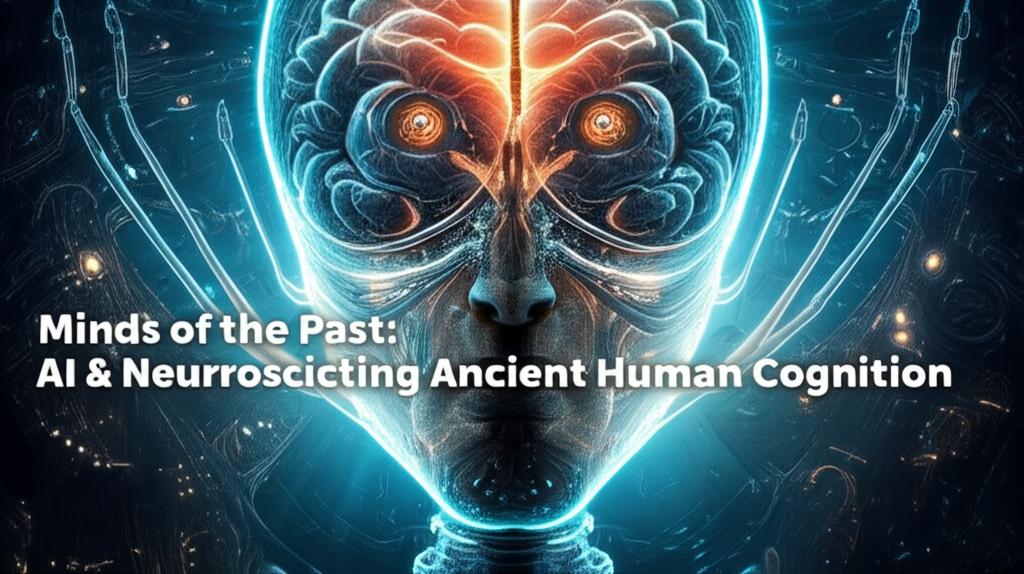Peering into the minds of our ancient ancestors, to understand how they thought, perceived their world, and developed complex societies, has long been a captivating challenge. Today, a powerful new alliance is forging pathways into this enigmatic past: Artificial Intelligence (AI) and neuroscience are joining forces with archaeology to reconstruct ancient human cognition in ways previously unimaginable.
This burgeoning field, often incorporating insights from "neuroarchaeology" and "cognitive archaeology," leverages the analytical power of AI to decipher the subtle clues left behind by early humans. These clues, ranging from the intricate patterns on stone tools to the layouts of ancient settlements and the symbolic expressions in rock art, offer windows into the cognitive capabilities of our predecessors.
AI algorithms, particularly machine learning and deep learning, are proving adept at tasks that were once painstakingly slow and prone to human bias. For instance, AI can analyze vast datasets of archaeological artifacts, such as stone tools, with remarkable speed and precision. By examining minute variations in knapping techniques, tool symmetry, and edge angles over time, AI helps researchers identify trends in toolmaking that may reflect underlying cognitive and neurological advancements. This includes exploring whether complex tool production sequences exhibit recursive thinking, a key element of modern human language and complex thought.
Beyond artifacts, AI is revolutionizing how we understand ancient environments and social structures. AI-powered analysis of satellite imagery and LiDAR data can identify potential archaeological sites that are invisible to the naked eye, revealing lost cities and settlements. This not only expands our map of the ancient world but also provides crucial context for understanding how early humans adapted to and modified their landscapes, offering insights into their spatial awareness, planning abilities, and social organization.
The realm of ancient languages and symbolic communication is also being transformed. AI models are being trained on vast linguistic datasets to help decipher damaged or incomplete ancient texts and even reconstruct the phonetics of lost languages. Tools like Ithaca, a deep neural network, can restore missing text from ancient Greek inscriptions, identify their original locations, and help date them with impressive accuracy. This allows us to hear fainter echoes of ancient voices and potentially understand their narratives, beliefs, and social dynamics more deeply.
Neuroscience provides a crucial framework for interpreting these AI-driven findings. By studying the modern human brain and its responses to tasks similar to those ancient humans might have performed – such as toolmaking or navigating complex environments – researchers can develop hypotheses about the neural substrates that underpinned ancient cognitive abilities. For example, neuroimaging studies of contemporary flintknappers can offer clues about the brain regions involved in the complex motor skills and planning required for ancient tool production. This interdisciplinary approach allows us to move beyond simply describing what ancient humans did, to exploring how they thought and perceived their world.
Furthermore, AI is being used to create sophisticated 3D reconstructions of ancient sites and artifacts, offering immersive ways to experience and study the past. These virtual environments can help researchers test hypotheses about how ancient people might have interacted with their surroundings and even how their brains might have processed visual information from their environment. Some researchers are even exploring how AI can model the evolution of the human brain itself, considering factors like metabolic costs and environmental challenges.
The synergy between AI and neuroscience in archaeology is also shedding light on the very evolution of human consciousness and creativity. By analyzing rock art, for example, researchers are gaining insights into the symbolic thinking and aesthetic sensibilities of early humans. AI can help identify patterns and recurring motifs in these ancient artworks, potentially revealing shared cultural ideas and cognitive frameworks across different times and regions.
While the potential of this collaboration is immense, researchers are also mindful of the challenges and ethical considerations. The risk of AI perpetuating existing biases present in historical data is a significant concern, as is the potential for misinterpretation if AI-generated hypotheses are not critically evaluated by human experts. Ensuring that AI tools are used to augment, rather than replace, human expertise is crucial.
Despite these caveats, the fusion of AI and neuroscience is undeniably opening new frontiers in our quest to understand the minds of the past. By providing powerful new tools for analysis, reconstruction, and interpretation, this collaboration is helping us piece together the intricate puzzle of ancient human cognition, revealing the ingenuity, adaptability, and evolving consciousness of our ancestors with ever-greater clarity. The journey into the minds of the past is just beginning, and AI is proving to be an indispensable guide.

